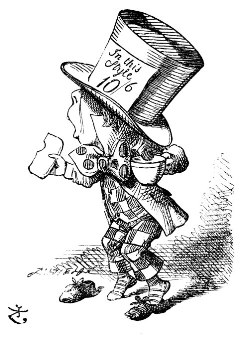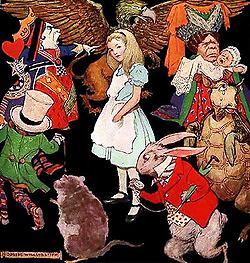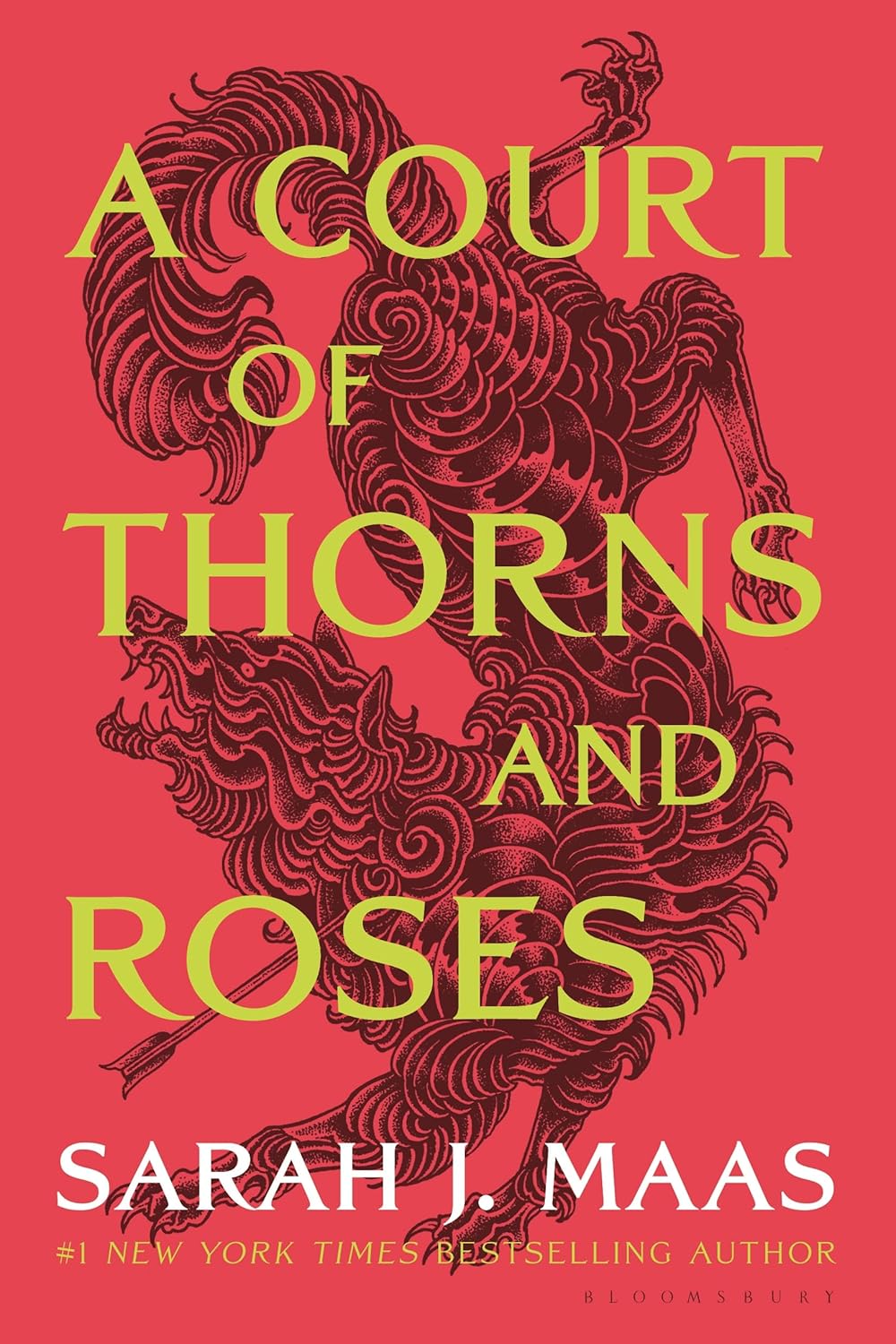- Home
- Fairy Blog
- Fairy Cakes
- Fairy Quotes
- Safety Dance
- The Flower Fairies Books
- What is a Fairy?
- Are Fairies Real?
- Elemental Fairies
- Faeries
- What are the Fae?
- Fae Fantasy Books
- Fairy History
- Origin of Fairies
- Fairies in Folklore
- Pixies
- Pixie Fairy Differences
- Gothic Fairies
- Tooth Fairy
- Fairy Festivals
- Fairy Gardens
- Fairy Garden Accessories
- Fairy Forests
- Fairy Poems
- Fairy Tales
- Fairy Tale Origins
- Classic Fairy Tales
- 24 Fairy Tales
- Fairy Tales around the World
- About Fantasy Creatures
- Dragons
- Dwarves
- Elves
- Gnomes
- Leprechauns
- Mermaids
- Unicorns
- Fairy Face Painting
- Free Fairy Art
- Fairy Coloring Pages
- Fairy Crafts For Kids
- Chinese Dragon Art
- How to Draw a Dragon
- Chinese Dragon Drawing
- Dragon Coloring Pages
- Fairy Tattoo Ideas
- About Us
- Contact Us
- Disclaimer
- Privacy Policy
The Alice In Wonderland Tea Party
In the Alice In Wonderland Tea Party, also known as the Mad Hatters Tea Party, you may recall Alice as she is going down the rabbit hole into the fantasy world that confounds the senses, challenges the rules of logic, and turns social norms on their heads.
In this world, Alice finds herself taking part in a tea party that is as absurd yet delightful.
This Tea Party is an excellent portrayal of Carroll's ability to use whimsy and playfulness as tools to make you think.
This very strange tea party is filled with riddles that have no answers and a clock that is always set at six o'clock. This is an absurd place. This crazy scene compels the reader to question logic, in a world where it seems ridiculous.
And we mustn't overlook the ensemble of unforgettable characters around this tea table - the Mad Hatter, March Hare, and the sleepy Dormouse. Each of their idiosyncratic conducts at the party points towards the deeper personal philosophies of Carroll.

Amazon Audible Promo
With Amazon Audible’s holiday promo ($0.99/month for 3 months) and the release of Harry Potter: The Full-Cast Audio Editions, there's never been a better time to join.
The Alice In Wonderland Tea Party
Lewis Carroll was the pen name for Charles Lutwidge Dodgson, an English writer, mathematician, logician, Anglican deacon and photographer. He was born on January 27, 1832, and died on January 14, 1898.
Carroll is most famous for his brilliant works "Alice's Adventures in Wonderland" and the sequel "Through the Looking Glass," which were inspired by his friendship with the Liddell sisters.
The Characters at the Alice in Wonderland Tea Party

We can't avoid addressing the eccentric characters Carroll had sharing the tea table.
The Mad Hatter, the March Hare, and the perpetually snoozy Dormouse were known for their peculiar behavior, and we see glimpses of Carroll's personal philosophies.
The White Rabbit is one of the most famous characters from Lewis Carroll's "Alice's Adventures in Wonderland". It's the White Rabbit who leads Alice down the rabbit hole, setting off her fantastic journey in Wonderland.
The White Rabbit is portrayed as anxious, nervous, and is always worried about being late. This sense of hurrying up is symbolized by his pocket watch, an object he constantly refers to. Interestingly, the character of the White Rabbit serves as a stark contrast to the chaotic and unruly universe of Wonderland.
He exhibits a level of order and punctuality which is otherwise absent in this imaginary world. The White Rabbit is also shown to be a servant to the Duchess and later, the Queen of Hearts, giving audiences a glimpse into the hierarchy established in Wonderland.
 Mad Hatter
Mad HatterThe Mad Hatter and his disregard for time is another iconic character from Lewis Carroll's "Alice's Adventures in Wonderland." Despite not being the main character, the Mad Hatter's peculiarity often places him at the forefront of popular references to the novel.
He's known for his eccentric personality, unusual riddles, and crazy behavior, all wrapped up in the famous scene, the Alice In Wonderland Tea Party. During this event, he is seen engaging in meaningless debates, asking riddles with no answers and perpetually stuck in tea-time due to a fallout with Time.
It's interesting to note that Carroll never refers to the character as "mad," but his crazy behavior earns him the nickname.
The Mad Hatter's character is inspired by the phrase "as mad as a hatter," which resulted from the historical occupational hazard where hat makers were often exposed to mercury fumes, leading to mercury poisoning symptoms that resembled madness.

The March Hare is an eccentric and mad character and central to the Tea Party. His appearance is wild and he's stuck at the never-ending Tea Party.
The Dormouse is the other memorable character from the Tea Party. Known for his habit of often falling asleep, even while speaking or in mid-conversation.
His character adds a certain whimsical charm to the story. The Dormouse frequently engages in silly storytelling, sharing tales that often baffle Alice. Despite being bullied by the Mad Hatter and the March Hare during the infamous Tea Party, the Dormouse maintains his innocence.
Moreover, the Dormouse's constant state of sleep and his silly stories may demonstrate the state of his dreams and unconscious mind, brilliantly showing the craziness for which Carroll's work is known.
The peculiar tableau of characters and situations at the Mad Hatter's tea party are not merely fanciful figments of childhood imaginings, but real symbols of social criticism.
Therefore, the next tea party invitation you receive could be a chance to uncover profound meaning hidden amidst perceived madness.
Alice in a World of Wonderland

By painting a world of wonder in the form of the Mad Hatter's tea party, Carroll offers valuable critique on his prevailing thoughts of our society's normal way of acting.
His tactful use of absurdity, allegorical characters and nonsensical contexts relay a key lesson - it is not only beneficial to question authority, it's necessary. Amidst the current use of our rigid viewpoints, we must all see that it's a lesson worth noting.
The characters and events found at the table of "Alice In Wonderland Tea Party" are not just charming remnants of childhood imagination, but also important symbols of social philosophical trends.
So the next time you find yourself invited to a whimsical tea party, remember the lessons hidden in the dialogue, the questions posed, and the strangeness presented. It could just be an opportunity to learn from the Hatter and his crew on how to understand and make sense of the meaning within a world of madness.
My Thoughts
In writing this, I sought to create entertainment that could both captivate and educate. Telling about the Alice in Wonderland Tea Party is an attempt to escape from boring everyday events.
I thought I could tell a story with an important lesson. My final thoughts? If this piece urges the readers to consider the world's craziness and the meaning within, then my purpose has been well served.
Read more about the Mad Hatter's Tea Party here.
Read more about Alice Adventures in Wonderland here.
Book of the Month
The Best Selling Fae Fantasy Book! A great Christmas gift!
CLICK HERE for more information and best price!
Recent Articles
-
Fae Fantasy Books - where love can be both thrilling and terrifying!
Nov 22, 25 02:34 AM
Fae Fantasy Books - explore new aspects of what it means to be human in a world where magic and immortal beings exist! A perfect blend of danger and allure! -
Water Fairies: Meet the Mystical Undines of the Waters
Nov 19, 25 02:45 AM
Water fairies, often called undines, are enchanting magical beings deeply connected to the element of water. These spirits appear in folklore and fairy tales -
Earth fairies are elemental beings connected to the earth element.
Nov 19, 25 02:34 AM
Earth fairies, also known as gnomes, are elemental beings deeply connected to the earth element. They have rich roots in folklore, mythology, and fairy tales




